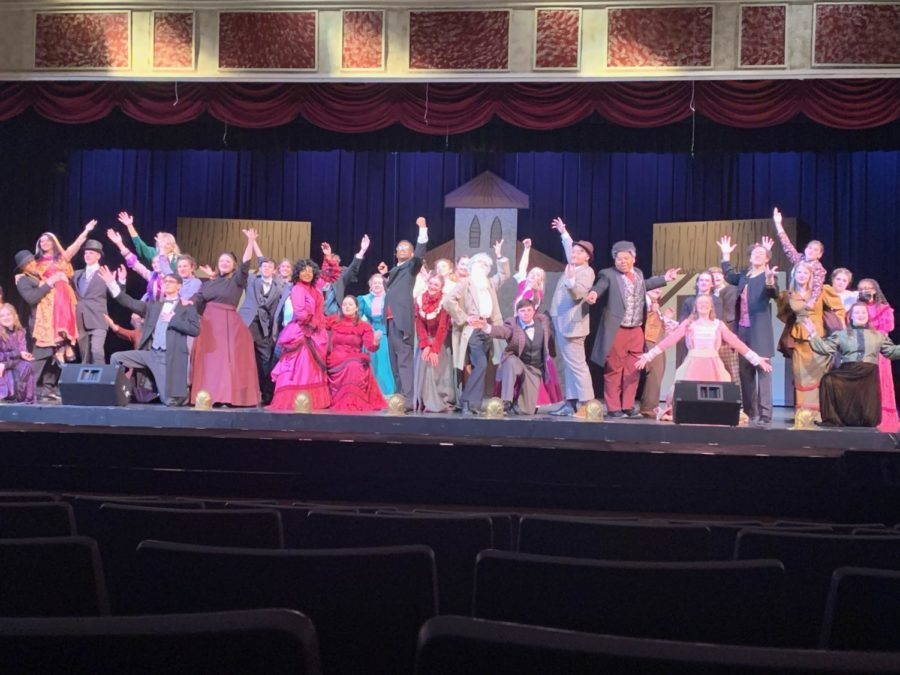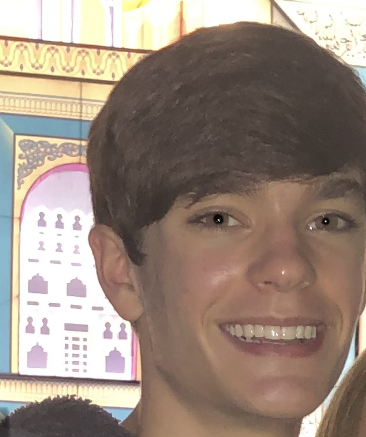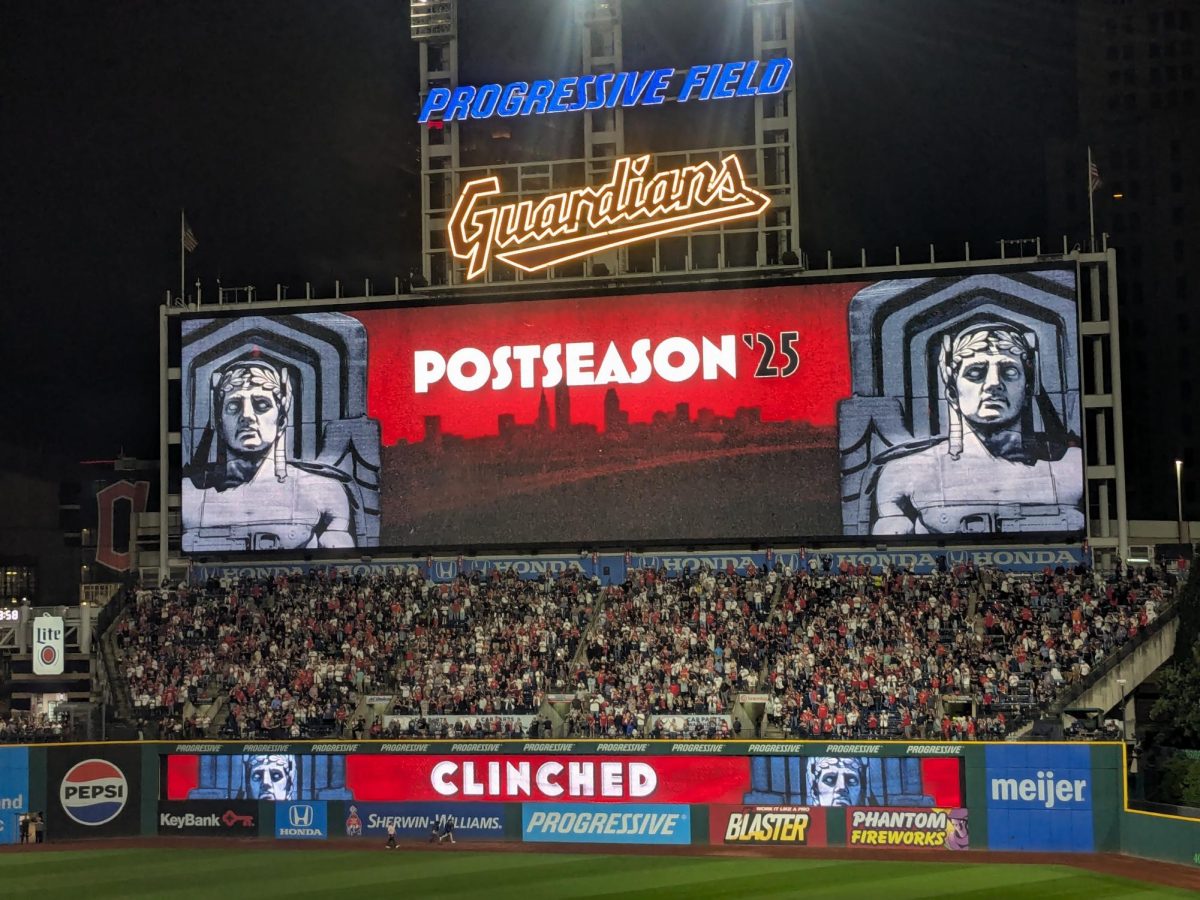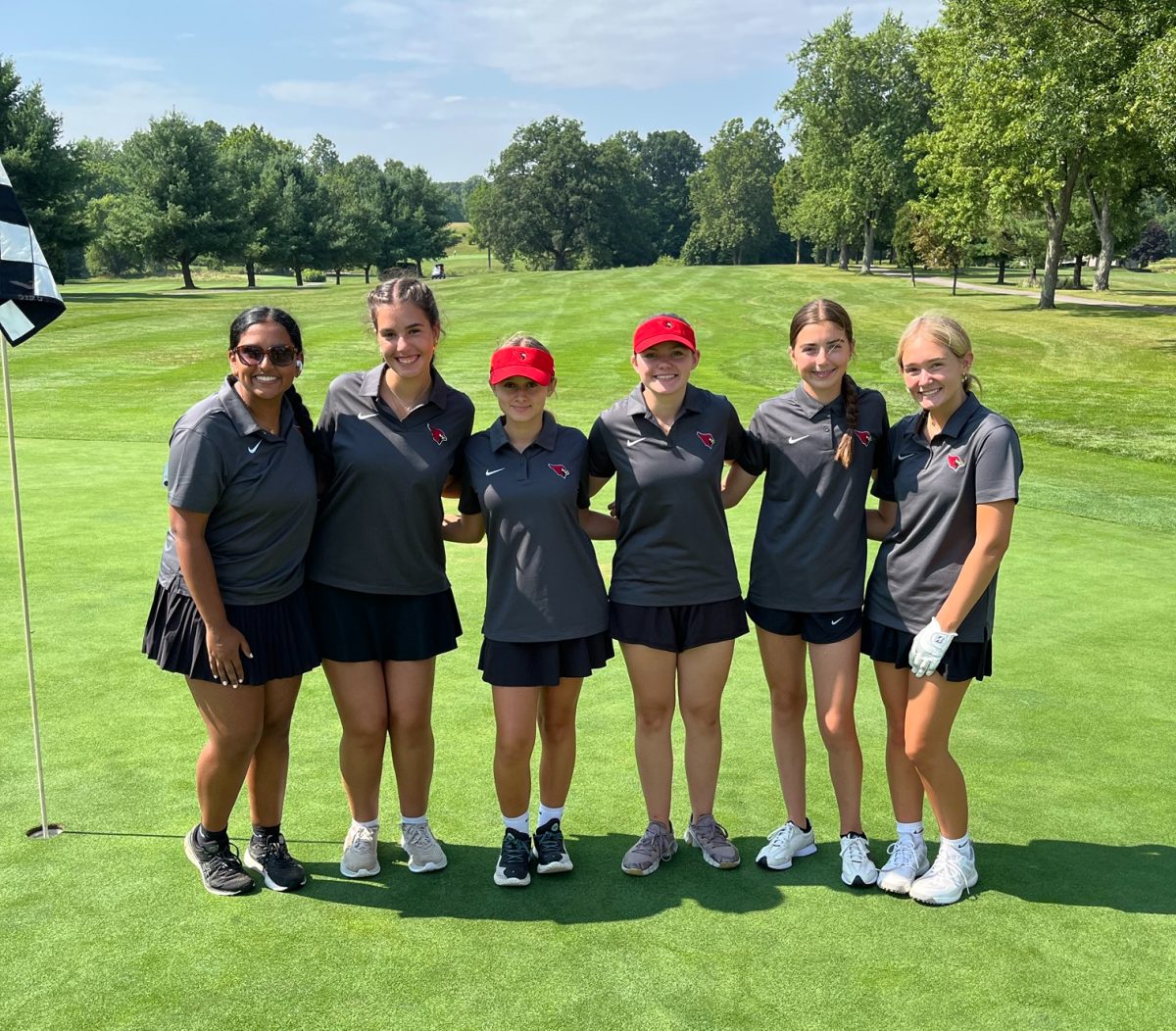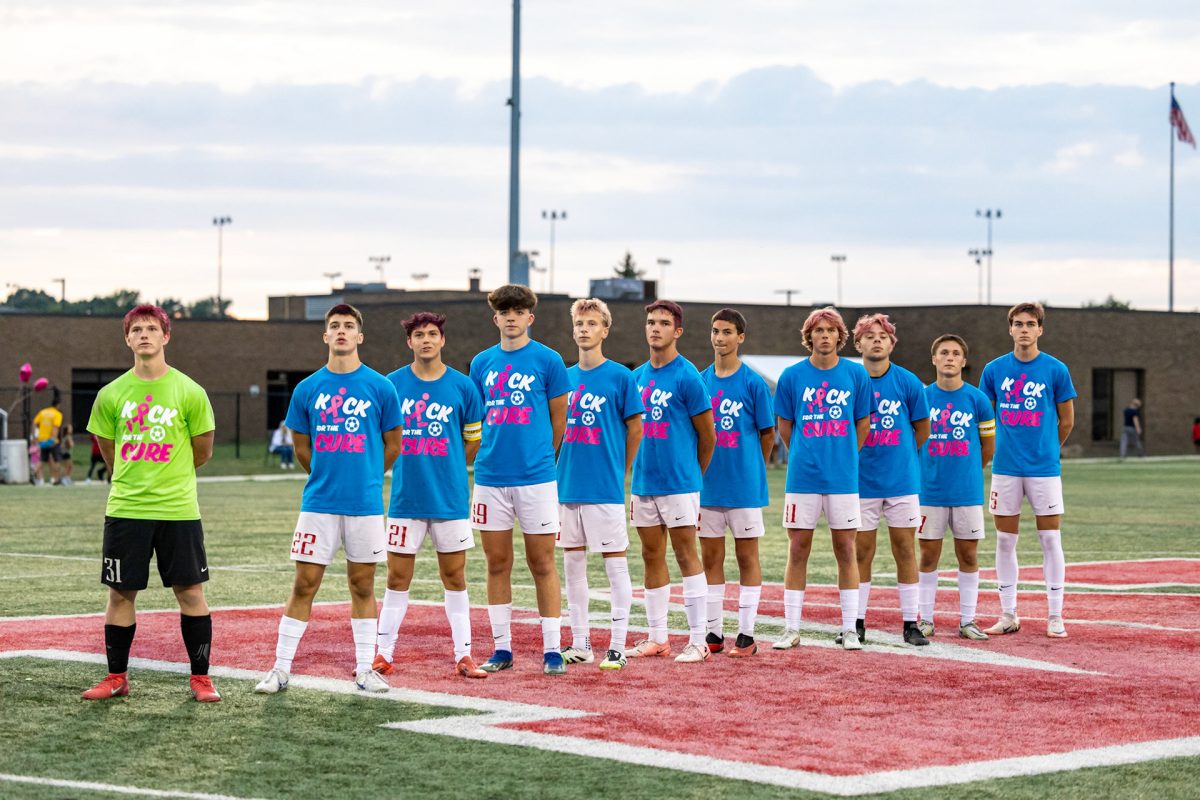Behind the Scenes with “The Mystery of Edwin Drood”
A breakdown of everything that went into bringing MHS’ 2022 spring musical to life – from the new Mentor Theatre President, Doug Slovenkay!
“The Mystery of Edwin Drood” was a spring musical with hundreds of possible endings!
April 21, 2022
After a five-month rehearsal process, Mentor High School’s interactive, whodunit production of The Mystery of Edwin Drood concluded April 17. The primary draw of the musical was the audience’s ability to be able to democratically decide how the show was to end each night through a vote that took place during the second act of each showing. The result was a different ending on each of the four show dates, which gave those who viewed the show multiple times a special treat each time they came.

This aspect of the production made it a thrill to be a part of from the perspective of the audience. But what about those involved? As a member of the cast myself, I believe rather strongly that I speak for the majority when I say that from start to finish, bringing The Mystery of Edwin Drood to life was a joy. The experience was extremely rewarding, as seeing all of the hard work that went into bringing the show to fruition create a strong finished product is a satisfaction unlike any other. As evidence of this, below, I will detail the lengthy process that went into putting together The Mystery of Edwin Drood.
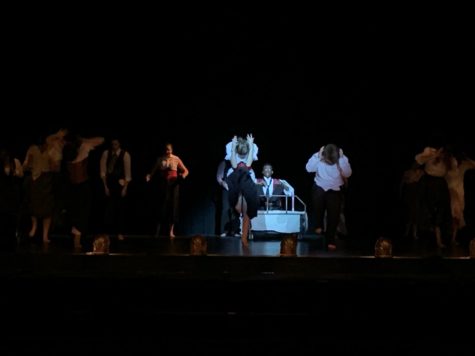
The Rehearsal Process (December, 2021 -April, 2022)
Beginning in December, the cast began to meet in order to begin to learn various components of the show. Dance Rehearsals, under the direction of Mrs. Marlene Leber, were held nearly every day of the week, with specific dance numbers being rehearsed on specific days. Depending on the number, rehearsals varied in length from a half-hour to two full hours. Each dance number was rehearsed just once a week, a process that sustained until early March when rehearsals began to encompass multiple numbers.
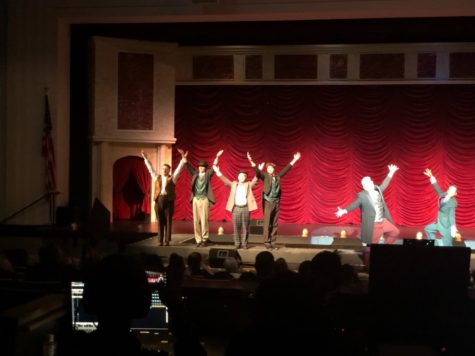
In addition to dance rehearsals, members of the cast also had a two-hour vocal rehearsal every Monday, led by Mrs. Laurie Eppler. During these rehearsals, students would run through all of the songs in the show, with emphasis on memorization and note accuracy. In addition to rehearsing dances and vocals, students who had speaking roles also had multiple blocking rehearsals per week, headed by Mr. John Greene. During these practices, cast members would work on the delivery of their lines, as well as the more tedious aspects of putting together a show, such as where to stand when delivering a certain line, what to do with one’s hands at a given moment, and what facial reactions to have when other characters are speaking.
In March, when the show was just one month away, the rehearsal process ramped up. Rehearsals were no longer split up into three separate facets; they instead began to focus on running through specific parts of the show (such as running through the entirety of Act 1 on one day, and Act 2 on the next). These practices began to increase in length, running from after school through six o’clock.
It is also at this time that the pit orchestra began to intermingle with the cast. The pit orchestra, composed of an array of both stringed and wind instruments, also began rehearsing in the winter and was responsible for putting together the live music that accompanied the on-stage actors.
On April 2nd, the show began to truly take form, as “Tech Day” commenced. Tech Day, which typically takes place on the Saturday prior to the week of the show, is the day in which the technological aspects of the performance are incorporated into the show. This includes items such as lights, sound cues, and microphones.
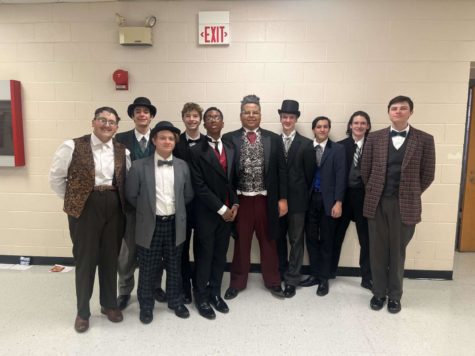
With the inclusion of technology also comes the inclusion of crew! Mentor High School theatrical productions are largely student-run when it comes to the behind-the-scenes, nitty-gritty workings. Students, under the supervision of Mr. Paul Gatzke, are largely responsible for operations such as what lights and set pieces are to be on at certain times, when to pull the curtain, and ensuring that all props are in order and ready for use. For students who are eager to become involved with theatre but are hesitant to be in front of an audience, joining a crew is a great way to do so! It is on Tech Day that the show, for the first time, is truly brought to life, making it a day that is always truly wonderful.
Following Tech Day is show week, which is when everybody involved with the production: cast, crew, and pit orchestra alike, are put in a perpetual state of exhaustion as a result of rehearsals that can run for as late as 9:30 at night. While this schedule is certainly grueling, it all pays off come performance time, as the excitement of taking the stage becomes paramount over any inkling of exhaustion and/or burnout.
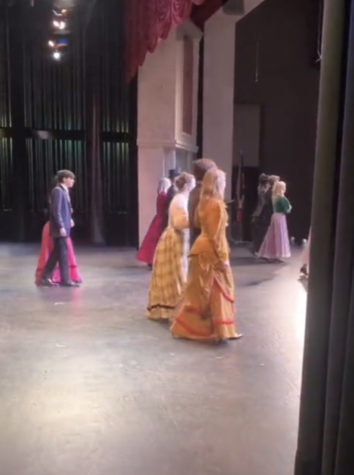
Performance Days
Upon arrival (students are typically given a “call time” that is roughly three hours from when the show opens), members of the cast and crew gathered in a large circle inside the hallway of the Fine Arts Center as part of a tradition known as “Circle Time”. Typically, this tradition commences just prior to a performance when everybody is in costume, a practice that had to be modified this year due to members of the cast being given the duty of mingling with the audience prior to the performance.
Circle Time is when each night, students of a given grade (Freshmen on Thursday, Sophomores on Friday, Juniors on Saturday, and Seniors on Sunday) give their fellow cast-mate a brief final farewell/thank you message, an excellent way to bring the cast together and develop a deepened sense of connectedness prior to each performance. Following Circle Time, the cast is given roughly two hours to put on any makeup that they may need for the show and get into costume. This process leaves actors plenty of downtime, which many of the gentlemen in the cast filled with some intense group gaming sessions on a Nintendo Switch brought from home!
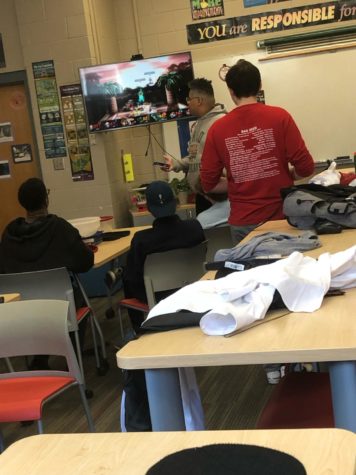
An hour before the show, all actors report to the choir room to conduct some brief vocal warm-ups and shake off any last minute pre-show jitters!
s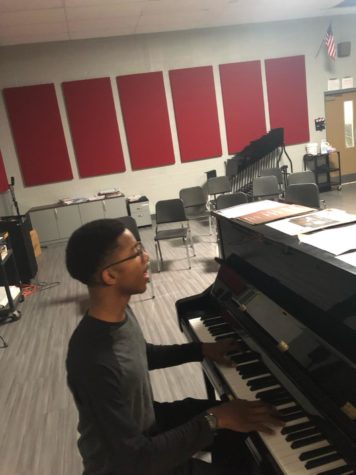
Typically, the role of the students involved with the cast becomes very cut-and-dry once the actual show begins; however, due to the unique nature of The Mystery of Edwin Drood, this was hardly the case. As soon as the house doors opened at 6:30, the cast was waiting in the Fine Arts Center, ready to greet and interact with the audience prior to each show, an effective way to “break the ice” so to speak, and give the audience a taste of the interactive fun to come!
At 7 PM, the lights dimmed in the FAC, and the show commenced. This was until halfway through Act 2 when the house lights are abruptly brought back on, and the audience was tasked with a number of decisions, including who they believe killed the musical’s title character, Edwin Drood. Members of the cast were divided into groups of two or three and were responsible for counting votes in, gathered by a raise of hands, and recording their votes on a slip of paper. This paper was then delivered to Mr. Greene, who plugged the data into his computer. Mr. Greene then took note of the character who had the most audience votes and informed the individual that they were to sing a confession solo at the show’s conclusion. The result of this controlled chaos was an action-packed, humorous, and always-unique conclusion that kept the audience on their toes right until the very end.
Strike
Following the final show on Sunday evening, those involved with the production must hold off on celebrating for just a short while, as they first must strike, or disassemble, the set. This process is another one that perhaps can be best described as controlled chaos, as for hours on end there are constantly screwdrivers running and planks of wood falling from the sky.
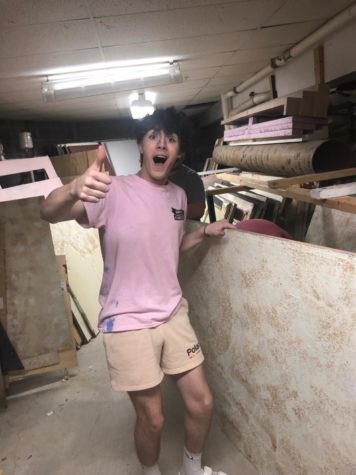
While on paper, having to strike a set after a tiring weekend of performing may sound unappealing, I believe that many members of the cast and crew alike will attest that organizing planks of wood in the prop shop and wielding screwdrivers with one’s friends is actually a strangely excellent conclusion to the months-long process that went behind putting a quality product onto the very floorboards that are ripped from the ground, leaving nothing but memories behind.

